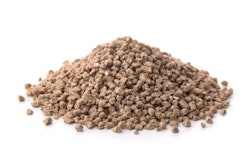
Nebraska Farm Bureau is encouraging farmers and ranchers affected by the recent blizzard across the Northern Plains to take advantage of United States Department of Agriculture (USDA) disaster assistance programs designed to help producers recover from natural disaster events.
“As we continue to hear from members about damages and losses associated with the recent blizzard, it’s important producers don’t forget that there are programs available to assist them,” said Steve Nelson, Nebraska Farm Bureau president. “USDA has been extremely helpful in identifying several programs that could aid those dealing with excessive loss. The most important thing a producer can do once they know they’ve experienced damage or loss is to get in contact with their local USDA service center as soon as possible.”
Among the programs available to producers are the Livestock Indemnity Program (LIP), and the Emergency Assistance for Livestock, Honeybees, and Farm-Raised Fish Program (ELAP). The LIP offers payments to eligible producers for livestock death losses in excess of normal mortality due to adverse weather. The ELAP provides emergency relief for losses due to feed or water shortages, disease, adverse weather or other conditions which are not adequately addressed by other disaster programs.
“Prompt reporting and verifiable documentation of losses are critical to being eligible for assistance under these programs,” said Nelson. “Producers need to submit notice of losses and the appropriate documentation within 30 calendar days of when the losses became apparent.”
According to the Farm Service Agency (FSA), producers should record all pertinent information regarding livestock losses due to the eligible adverse weather loss or condition, including:
- Documentation of the number, kind, type and weight range of livestock that have died, supplemented if possible by photographs or video records of ownership and losses;
- Rendering truck receipts by kind, type, and weight – important to document prior to disposal;
- Beginning inventory supported by birth recordings or purchase receipts;
- Documentation from Animal Plant Health Inspection Service, Department of Natural Resources, or other sources to substantiate eligible death losses due to an eligible loss condition;
- Documentation that livestock were removed from grazing pastures due to an eligible adverse weather or loss condition;
- Costs of transporting livestock feed to eligible livestock, such as receipts for equipment rental fees for hay lifts and snow removal;
- Feed purchase receipts if feed supplies or grazing pastures are destroyed.
“USDA has several other programs in addition to LIP and ELAP that producers might find of assistance in their recovery efforts. These programs exist to help producers. We encourage those dealing with losses to contact their USDA service center to see which programs may be of assistance to them,” said Nelson.















